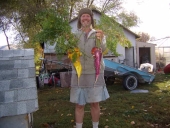
 3
3





 6
6




 1
1




Living in Anjou , France,
For the many not for the few
http://www.permies.com/t/80/31583/projects/Permie-Pennies-France#330873
 4
4








Living in Anjou , France,
For the many not for the few
http://www.permies.com/t/80/31583/projects/Permie-Pennies-France#330873





"Study books and observe nature; if they do not agree, throw away the books." ~ William A. Albrecht
 1
1




David Livingston wrote:Marcus what's a jinglos?
David
 1
1




Bert Kreich wrote:Hi all!
I planted 20 bare root fruit trees this past Spring, but this was before being introduced to permaculture. I made some mistakes, and i'm hoping to get some insight from those more knowledgable than myself on how I should proceed.
To summarize:
I planted 4 separate varieties; Gala, Mcintosh, Mt Royal Plum, and Resilience Peach on semi dwarf rootstock (5 of each variety).
Johny
Bless your Family,
Mike





Iterations are fine, we don't have to be perfect
My 2nd Location:Florida HardinessZone:10 AHS:10 GDD:8500 Rainfall:2in/mth winter, 8in/mth summer, Soil:Sand pH8 Flat





















Hans Albert Quistorff, LMT projects on permies Hans Massage Qberry Farm magnet therapy gmail hquistorff




"The rule of no realm is mine. But all worthy things that are in peril as the world now stands, these are my care. And for my part, I shall not wholly fail in my task if anything that passes through this night can still grow fairer or bear fruit and flower again in days to come. For I too am a steward. Did you not know?" Gandolf




"The rule of no realm is mine. But all worthy things that are in peril as the world now stands, these are my care. And for my part, I shall not wholly fail in my task if anything that passes through this night can still grow fairer or bear fruit and flower again in days to come. For I too am a steward. Did you not know?" Gandolf








Charlotte Anthony
The Mother Who Plants Trees
http://www.handsonpermaculture1.org
victorygardensforall@gmail.com








 1
1




Josephine, Forest Witch








Chris Ferguson wrote:I would love to plant some Acacia trees for chop-and-drop but don't know if I have room???

| I agree. Here's the link: http://stoves2.com |





